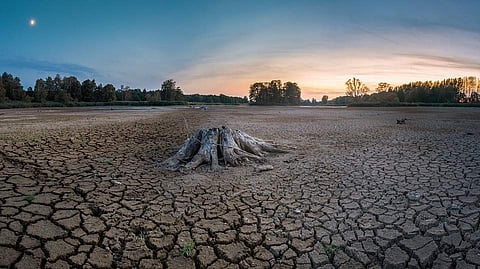

Up to 60 per cent of wheat-growing areas around the world may see simultaneous, severe and prolonged droughts by the end of the century, according to a study.
Wheat — the largest rain-fed crop in terms of harvested area — provides about 20 per cent of all calories consumed by humans, the study, published in the journal Science Advances, noted.
The researchers, including those from the University of Arkansas in the US, said that even if the global average temperature is held within 2 degrees Celsius above pre-industrial levels — which is the target of the Paris Climate Agreement — up to 30 per cent of the global wheat producing areas could see simultaneous drought.
According to the study, severe drought could affect up to 15 per cent of current wheat-growing areas if the weather patterns currently observed continue along the same trend.
However, the study projected that without climate crisis mitigation, up to 60 per cent of the current wheat-growing area will face simultaneous droughts by the end of this century.
"This clearly suggests that global warming will affect food production," said Song Feng, second author of the study from the University of Arkansas in the US.
Feng said that such droughts would be a shock to the global food production system.
According to the researchers, the risk of widespread drought in wheat producing areas of the world is four times the level seen today.
The researchers analysed "terabytes of information," taking more than two months, and developed 27 climate models, in which, each had three different scenarios.
They found that the total area affected by severe drought globally and food prices were closely related.
More widespread drought, the researchers said, meant higher food prices in the past.
"If only one country or region sees a drought, there is less impact," Feng said.
However, Feng added that if multiple regions are affected simultaneously, it could affect global production and food prices, and lead to food insecurity worldwide.
